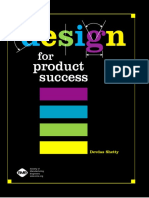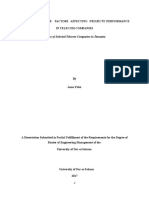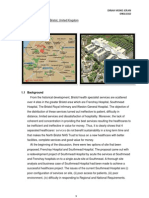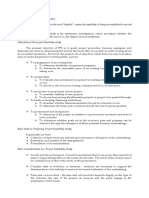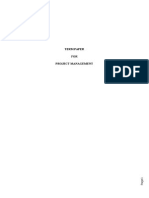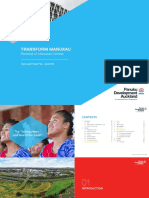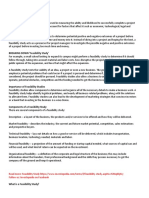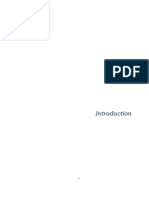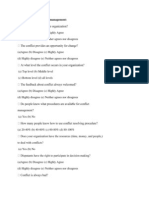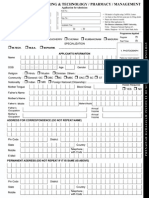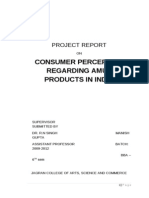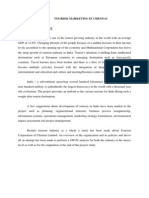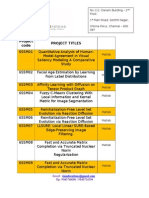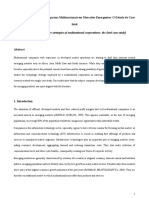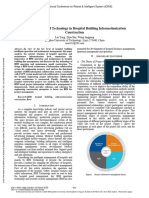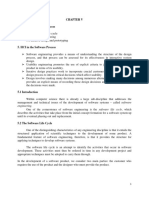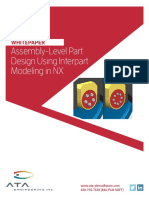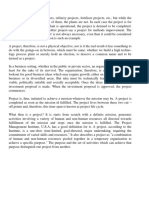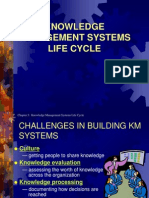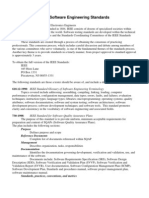Project 2 - Project Management - Construction
Project 2 - Project Management - Construction
Uploaded by
kalamsoftwareCopyright:
Available Formats
Project 2 - Project Management - Construction
Project 2 - Project Management - Construction
Uploaded by
kalamsoftwareOriginal Description:
Original Title
Copyright
Available Formats
Share this document
Did you find this document useful?
Is this content inappropriate?
Copyright:
Available Formats
Project 2 - Project Management - Construction
Project 2 - Project Management - Construction
Uploaded by
kalamsoftwareCopyright:
Available Formats
TITLE- PROJECT MANAGEMENT: Have to check , whether it is related to title or not.
INTRODUCTION This project report is based on Construction Project of Bulk Liquid Oil Terminal and Jet Fuel Pipeline from Jebel Ali Port to Dubai International Airport .Punjlloyd Limited is playing a role of Main EPC Contractor And I am working here as Lead Civil Engineer with Punjlloyd Ltd.The Company actvily Executing this project For owner (ENOC-Emirates National Oil Company) with his subcontractor as Cylingas LLC, Sands Contracting LLC, Punjlloyd B&I etc. Tebbodin appointed as Engineering Cunsultant. Detailed description given innext. The company was actively seeking various ways to analyze, characterize, and avoid contract risks in their global business. Through on-site visits, interviews, surveys, and extensive data collection, I in this project helped establish a contract management system that consists of an improved contract management process, tools for risk management, and a step-by-step performance evaluation procedure. ABOUT CONTRACT MANAGEMENT: Contract management or contract administration is the management of contracts made with customers, vendors, partners, or employees. Contract management includes negotiating the terms and conditions in contracts and ensuring compliance with the terms and conditions, as well as documenting and agreeing on any changes or amendments that may arise during its implementation or execution. It canbe summarized as the process of systematically and efficiently managing contract creation, xecution, and analysis for the purpose of maximizing financial and operational performance and minimizing risk. Common commercial contracts include employment letters, sales invoices, purchase orders, and utility contracts. Complex contracts are often necessary for construction projects, goods or services that are highly regulated, goods or services with detailed technical specifications, intellectual property (IP) agreements, and international trade. A study has found that for "42% of enterprises...the top driver for improvements in the management of contracts is the pressure to better assess and mitigate risks" and
additionally,"nearly 65% of enterprises report that contract lifecycle management (CLM) has improved exposure to financial and legal risk." A contract is a written or oral legally-binding agreement between the parties identified in the agreement to fulfill the terms and conditions outlined in the agreement. A prerequisite requirement for the enforcement of a contract, amongst other things, is the condition that the parties to the contract accept the terms of the claimed contract. Historically, this was most commonly achieved through signature or performance, but in many jurisdictions - especially with the advance of electronic commerce - the forms of acceptance have expanded to include various forms of electronic signature. PROJECT BACKGROUND: I am working as lead civil engineer with this project, and during this period I Am going to review their project, while trying to develop qualitative and quantitative methods to assess and control the project risk.. With the information gathered, I shall begin to formulate means of 9 measuring risk. By the end of our project, I aim to have completed a review of their project, along with methods that help measure and control the projects risks. In order to accomplish our goal, we interviewed company personnel and analyzed the data that was gathered. The company personnel that i interviewed were top managers who were directly involved with this project, In order to fully optimize contract risk management, I also researched the four international delivery systems, which consist of contract management processes and systems, risks involving contracts, and performance evaluation methods. With the completion of this project I was able to analyze the contracts life cycle along with determining the main elements of risk that should be taken into account during each specific phase. The individual risks were analyzed in greater detail to provide a more comprehensive evaluation. After the life cycle was analyzed we proceeded to analyze the Punjlloyds legal department. Seeing as how the Punjlloyd executed project was their fast track international project, they had no experience and little knowledge of international contracts and laws of UAE. This led them to hire other consulting firms to handle this work for them. Through our analysis of their legal department, I decided on two recommendations that we determined to be plausible. The first recommendation consists of recruiting or training law
personnel who specialize in international regulations and laws. Once the law personnel are acquired the next recommendation we opted to have was to create a legal department focused on international projects. Lastly, a performance evaluation was established based on the Fuzzy-AHP (Analytical Hierarchy Process), which helped combine various criteria to help evaluate individual workers performance. This method allows the combination of qualitative and quantitative methods to help analyze the workers performance. Contract management: The international EPC project contract management is completed by these six parts: finance management, HSE management, quality management, schedule management, human resource management, and procurement management. Professional knowledge is also very important. Contract risks analysis: During this part, we provide a brief overview about risks, which mainly focus on the project risk definition and risk categories. Then the risk analysis of the ENOC project is given. And the risks are divided into risks in the establishment phase of the contract and implementation phase of the contract based on the contract life cycle. Lots of specific and vivid cases are applied to make the risks clearer in this part. Project contract life cycle: For construction contracts, from the contract formation to the contracts end; it usually takes a long period of time, sometimes even years, and it has many processes. Contract management must be carried out throughout the entire life period, and in different stages, contract management has different tasks and priorities. To common open tender projects, the construction contract usually goes through two main phases: the establishment of the contract and the implementation phase of the contract. The establishment of the contract phase has two processes. These processes are bidding and contract ,These processes are the construction and the maintenance. The implementation phase of the contract also has two phases.
INDUSTRY PROFILE ABOUT CONSTRUCTION INDUSTRY: In the fields of architecture and civil engineering, construction is a process that consists of the building or assembling of infrastructure. Far from being a single activity, large scale construction is a feat of human multitasking. Normally, the job is managed by a project manager, and supervised by a construction manager, Design Engineer, construction engineer or project architect. For the successful execution of a project, effective planning is essential. Involved with the design and execution of the infrastructure in question must consider the environmental impact of the job, the successful scheduling, budgeting, construction site safety, availability of building materials, logistics, inconvenience to the public caused by construction delays and bidding, etc. COMPANY PROFILE : The PunjLloyd Limited is one of the largest construction companies in Idia and handles many construction projects in India, Middle East, Caspian Region .For the large, global player that it is today, Punj Lloyd had a modest start. Atul Punj, Chairman - Punj Lloyd was the third generation in the Punj family business. He started the pipeline division of Punj Sons Private Limited in 1982 which was later incorporated as Punj Lloyd Engineering Private Limited in 1988. The company was rechristened Punj Lloyd Private Limited in the following year and subsequently became Public Limited in 1992. From what started with pipelines, grew to constructing tanks & terminals, refineries, power plants and civil infrastructure. Punj Lloyd was also quick to spot opportunities in overseas markets and secured its first overseas contract Balongan Jakarta Product Pipeline, in Indonesia in 1992. At the time of the Indonesian crisis, Punj Lloyd stood steadfast when other international companies retracted. Punj Lloyd soon widened its international operations to Abu Dhabi, Kuwait, Qatar, Malaysia, Kazakhstan, Bangladesh, among others. This formed the basis for the establishment of the
Groups regional offices in the Caspian, Middle East and North Africa (MENA), South East Asia and South Asia. Punj Lloyd became listed in 2006 and in the same year, Punj Lloyd made another significant move. It acquired Sembawang Engineers & Constructors in Singapore, one of the largest engineering and construction groups in Southeast Asia and Simon Carves, the leaders in polymers and petrochemicals. The energy-packed 2006 also saw the Group enter into strategic joint venture agreements Dayim in Saudi Arabia for oil & gas and infrastructure and KAEFER of Germany for insulation. Growing from strength to strength, the group embarked on a branding initiative in 2006 to focus on creating a powerful EPC brand that unites global operations and diverse service offerings. The new logo is based on the idea of synergy - different entities working together to create a whole that is larger than the sum of its parts.The Group acquired a significant stake in UKs Technodyne International in 2008, making it a complete end-to-end service provider from design to construction in cryogenic LNG tanks. It has also made inroads into the happening Defence industry with a tie up with Singapore Technologies Kinetics to manufacture defence equipment for the Indian Army. From its evolution from a pipeline company to a renowned EPC player to today an over US$ 2.4 billion diversified player, also in Defence, Aviation, Upstream and Marine, Punj Lloyds history is dotted with interesting and heartening anecdotes of its rich experiences gained in different geographies, of people who stood tall to bring it so far, of complexities of its various diverse projects and the challenges of time.
PunjLloyd Group Punj LLoyd Sembawang PL Engineering 19 Major Group Subsidiaries/Joint Ventures : Punjlloyd Pte Ltd, Singapore PT Punjlloyd Indonesia PT SEMPEC Indonesia Punjlloyd Kazakhistan LLP Punjlloyd Oil & Gas (MALAYSIA), SDn. Bhd. Dayim Punjlloyd Construction Contracting Co Ltd. Punjlloyd Engineers And Constructors Pte Ltd, IRAQ PLN Construction Ltd, India
Punjlloyd Upstream Ltd, India Punjlloyd Delta Renewables Pvt Ltd. Punjlloyd Aviation Ltd. Punjlloyd Industries Ltd. Sembwang Engineers & Constructors Pte Ltd, Singapore Sembwang Hongkong LTD Sembwang Australia Pty LTD Sembwang LIbya General Contracting And Investing Company. Sembwang Caspian Engineering And Constructor LLP PL Engineering Ltd. Kafer PunjLloyd Ltd.
ABOUT OWNER COMPANY ENOC (Emirates National Oil Company)
ENOC is effectively wholly owned by the Investment Corporation of Dubai (ICD), an entity wholly owned by the Government of Dubai. The Company was incorporated with limited liability in the Emirate of Dubai in April 1993 and its registered office is P.O. Box 6442, Dubai, United Arab Emirates. Since its establishment in 1993, ENOC has made significant progress in meeting its overall objectives and currently predicates in an increasingly broad range of business ventures. ENOCs first subsidiary commenced operations way back in 1973. ENOC owns directly and indirectly more than twenty subsidiaries. The Group operates through five business segments namely: 1. Supply, Trading & Processing condensate and gas processing and oil trading; 2. Terminals - Storage for various petroleum and chemical products; 3. Marketing Marketing of aviation fuel, lubes, chemicals and industrials products; 4. Retail - Retailing fuel and non-fuel services at retail stations; and
5. Exploration & Production - Development and production of oil and gas. ENOC provides the energy behind Dubais phenomenal growth. The Group touches almost every facet of the Emirates development and puts its name firmly on the overseas arena. Responsible, reliable, innovative and progressive, ENOC is the Energy Partner of Choice. With the Groups expansion, from the shores of the Emirates to the Far East, Europe, and Africa, ENOC is now actively pursuing further global expansion. Today the Group is poised to engage in a new and challenging period of future growth and diversification. Drawing on the growth of the UAE as a strategic hub for global trade and aimed at meeting the fast-growing demand for bulk liquid terminalling, ENOC created Horizon Terminals Limited (Horizon) in 2003. Operating from UAE as a holding company, Horizon consolidated the companys existing terminalling investments and is expanding the business globally. Since its incorporation, Horizon has expanded from its terminals in UAE and Saudi Arabia as of 2003, to now cover Singapore, South Korea, Djibouti and Morocco. Horizon aims to become the largest independent terminal service provider in the bulk oil storage in the Middle East, Africa and the Mediterranean while maintaining a leading position in the Far East region. Horizon has two key business units UAE Terminals and International Terminals. ABOUT CONSULTANT Tebodin Consultants & Engineers: Tebodin is an independent, multidisciplinary consultancy and engineering firm with a turnover of 223 million (2011). They offer Thier clients worldwide the knowledge and experience of approximately 4,300 experts in industry, health & nutrition, oil & gas, chemicals, infrastructure, property andenergy & environment. The company has a network of around fifty offices in West, Central and Eastern Europe, the Middle East, Asia and Africa. Tebodin is part of Bilfinger SE, an internationally active engineering and services company with a leading position in its markets. Services: Their range of services covers consultancy, project management, design and engineering, procurement and construction management, which They offer either separately or as an integrated package. Network:
Through the network of Tebodin offices you benefit from short communication lines combined with local and international expertise. Additionally, the multidisciplinary character of our organization ensures a flexible structure, providing you services fully geared to your specific project requirements. Construction Management: Good management of all construction site activities leads to achieving the planned results within the agreed timetable and in accordance with the contract conditions, statutory requirements, specifications, drawings, and SHWE standards. Construction management provides economic and quantitative efficiency. As the general contractor, responsible for managing and supervising all construction parties and disciplines, Tebodin delivers optimal building efficiency and project speed. Consultancy: In order to bring any project to a successful conclusion, it is critical to evaluate the technical, economic, financial and managerial viability of planned investments. Potential risks should also be considered thoroughly before any decision is made. Their consultants assist us in developing a well-balanced strategy, from market research all the way to the execution of your plans. Tebodin experts provide us with the experience, knowledge and necessary tools to confidently make policy switches or complicated investment decisions. Tebodin serves a wide range of public and private clients worldwide. Their involvement in the public sector includes local and regional as well as national governments and international authorities such as the European Commission. NEED FOR STUDY: Maintaining and upgrading legacy systems is one of the most difficult challenges companies face today. Since these systems support mission critical applications, any effort to modernize legacy systems must preserve their functionality during the migration or replatforming process. Thus, this study was conducted to understand this process. There was the need of this study because in the recent years, the Civil engineering community has been showing a growing interest in agile development methodologies. These approaches have
emerged out of the need for faster, more flexible and efficient processes for constructing development. To improve the predictability of capital project cost and schedule by establishing project controls systems to monitor and predict project outcomes. Effective control systems identify deviations from project plans and commitments early enough to eliminate surprises and allow corrective action. Planning and implementation of construction project controls includes the following steps: Plan the control systems: During the project Front-End Planning, the owner should establish an overall plan to manage cost, schedule, and change during project execution. The form and structure of the project controls plan is influenced largely by the project execution strategy and contract type selected. For example, a firm-price design-build strategy requires minimal owner involvement because cost and schedule responsibility is consolidated in one contractor. Conversely, a reimbursable approach with multiple trade contractors will require a high degree of owner involvement to integrate input and information from multiple sources. Regardless of execution strategy or contract type, the project controls plan should outline and document: Required staffing Roles and responsibilities Cost management work process, including an accounting system that tracks project commitments as well as spending Schedule management system, including computer software Change management system, including the decision-making process Work breakdown structure Required contractor and owner reports. Establish the project budget and baseline schedule: The project budget and baseline schedule is determined during the Front-End Planning project phase. These become the control base from which any variation is measured during execution. Typically, these baselines are commitments to the owner organization for cost and schedule project outcomes and are often the basis for project funding. A process of successive estimating and scheduling is used to develop these control documents. During Front-End Planning a series of estimates and schedules are developed as project scope is more fully defined. These estimates and schedules become more and more detailed, and increasingly accurate, as
project knowledge increases. Estimates and schedules should be structured to match the execution strategy and contracting form established for the project. For example, if a firm price,multiple contractor strategy is selected, the estimates and schedules should be structured so that each contractors estimated cost and required schedule is clearly understood. Individual contractor schedules should be integrated to show interfaces, interdependencies, and potential interferences. Owners typically require the estimates and schedules to pass accuracy and risk guidelines before project authorization can occur. The project budget and schedule authorized, become the control baselines used during project Design, Construction, and Startup. Plan the work: During construction, segments of the work are placed with contractors through the procurement process. Control estimates are used to test the competitiveness of firm- price bids or to establish budgets for reimbursable work. Control schedules are included in the Request for Proposal (RFP) sent to each prequalified contractor, and ultimately are included as a requirement in the contract. The change management process and contractor reporting requirements documented during Front- End Planning are also included in the RFP and then as a requirement in the contract. Contractors should be prequalified to ensure that they have effective cost, schedule, and change management systems.
LITERATURE SURVEY Project Delivery Systems: According to ASCE (American Society of Civil Engineers), Project Delivery Systems describe how the project participants are organized to interact, transforming the owners goals and objectives into finished facilities. An international construction project has its own character with the global background. (a) The multinational main body of an international construction project contract. An n international construction project needs different teams from different countries to take part in. these determine the whole project will be restricted by various laws and provisions from different countries, which will lead to great dispute. (b) Various impact factors and increasing risks. Be impacted by politics and economic reasons more and more seriously. So as an international project, the holder not only has to focus on the project itself, but also pay attention to the host country and countries nearby, together with the global situation. (c) Follow stricter international contract items. An international construction project follows the international practice and criterion, which is much stricter. In order to carry it smoothly, the project holder should pay much more attention to quality and behavior of the staff as well.
In the field of international construction projects, the project delivery system is divided into the following four basic types: (1) Design-Bid-Build (DBB) (2) Management-Contracting-Approach (MCA) (3) Engineering-Procurement-Construction (EPC) (4) Build-Operate-Transfer (BOT) (1) Design-Bid-Build (DBB) This system has long been used in the West, and it has been developed well. So it was called Traditional Approach. Meanwhile the project is divided into small individual parts for construction, so it was called Fragmented Approach as well.
Fig.1 is the general schematic diagram of the relationship between the parties.
The most outstanding character of DBB is that the procedure of the project construction has to follow the order of Design- Bid- Build. Only when the former one has finished, the later one can start. Advantages of DBB: The owner, contractor, and engineer are clearly assigned their own responsibilities and tasks. Disadvantages of DBB: The procedure is linear and the lifetime is too long. the constructors, engineers, and contractors is difficult. can be very high. (2) Management-Contracting-Approach (MCA): Management Contracting Approach (MCA) Also the corresponding between Finally, the pre-investment finance ,Owner, Engineer, Management contractor, Construction, contractor, Supplier 1,2,3 Fig. 2 Management Contracting Approach
The management contractors are not in charge of the construction, they just have to manage the organization (See fig.2). The owner chooses this system because: The project is very large scale. The organization is complex. There are many tasks between different contractors to coordinate. The owner doesnt have the ability to manage the project organization.
Advantages of MCA:
The contractor serves the whole organization as a team, which creates largest benefit for the owner. Its easy to alter the management organization to adapt to the project. This system has a great information flow between engineering and management. Disadvantages of MCA: MCA doesnt have enough laws to guarantee the project will go on wheels. The owner chooses a management contractor means the owner has one more department to manage, which leads to an increase in overhead expenses. The different opinions between management contractor and engineering department will affect the coordination of the project.
(3) Engineering Procurement Construction (EPC):
The most outstanding character of DBB is that the procedure of the project construction has to follow the order of Design- Bid- Build. Only when the former one has finished, the later one can start. Advantages of DBB: The owner, contractor, and engineer are clearly assigned their own responsibilities and tasks. Disadvantages of DBB: The procedure is linear and the lifetime is too long. the constructors, engineers, and contractors is difficult. can be very high.
(4) Build Operate Transfer (BOT):
If the government doesnt have enough money for the construction of the project, they will try to attain investors from home and abroad to help with the project. The government, as a concession grantor, gives the concession to a private project company. During the concession period the company has to operate the project, then turn it back to the government. Advantages of BOT: The government is released from financial burden. The government can avoid large numbers of project risks. The investors share most of the risks. A BOT project is always operated by a foreign project team, which will input modern technology and management skills.
Fig 4 Build Operate Transfer Disadvantages of BOT: The public department and private department will need a long time to adjust to each other. They need to research, communicate, exam, etc. These activities will increase the prophase finance. During the concession period, the government will lose the right to control the project. The four basic project delivery systems are not independent but have close relationship with each other, even some of they can be employed at the same time. The only difference is the emphasis of the project organization and contract relationship. These project delivery system classifications help us to gain a good perspective of the rules involved in the project construction, and allow us to find ways to complete the project with high efficiency.
Fig.5 The procedure of project system engineering Project Contract Life cycle:
For construction contracts, from the contract formation to the contracts end; it usually takes a long period of time, sometimes even years, and it has many processes. Contract management must be carried out throughout the entire life period, and in different stages, contract management has different tasks and priorities. To common open tender projects, the construction contract usually goes through two main phases: the establishment of the contract and the implementation phase of the contract (See fig.). The establishment of the contract phase has two processes. negotiations. These processes are bidding and contract These The implementation phase of the contract also has two phases. processes are the construction and the maintenance. The establishment of the contract (1) Bidding period: The bidding period is from the preparation of bidding documents to bid opening. It is the initial offer and acceptance between the owners and the contractors, meaning it is the initial period of construction contract. (2) Contract negotiations: This period begins when a tender is made and ends when the contract is signed. This period can be divided into two stages:
Fig. 6 Life cycle of the contract (a) The initial evaluation of different tenders including declaring the unqualified tenders. Then do a comparative analysis among the contractors who offer reasonable prices and have the ability to construct the project. Finally choose the contractors. (b) The owners and the contractors discuss the future of the contract and how they are going to go about completing it. Finally, the two sides sign the contractors. The implementation phase of the contract This period is from signing the contract to the contract end. In this period, engineering work, procurement work and construction work need to be finished. Contractors must complete the construction work and take responsibility of the warranty work based on the quantity, quality, schedule and technique requirements written in the contract. Of course, at the same time, contractors can receive the economic benefits according to the contract. The purpose of this paper is to discuss the contract management of international EPC projects, and we mainly focus on the implementation phase of the contract, which can be divided into engineering (E), procurement (P), and construction (C) based on the process of EPC construction project. In the next part (2.3), contract management in the implementation phase of the contract will be discussed in detail.
Risk and Risk Management: Risk management has been widely applied in various fields such as economics, insurance, industries, and so on. While the word risk means that uncertainty can be expressed through probability, risk management is a structured process for the management of uncertainty through risk assessment. Project risk is based on a simple equation: Risk = (Probability of Event) (Consequences of Event). In other words, all risks must be evaluated in terms of two distinct elements: the likelihood that the event is going to occur as well as the consequences, or effect, of its
occurrence. Risk and opportunity are mirror opposites of each other. Opportunity emerges from favorable project circumstances and risk emerges from unfavorable events. Systematic risk management comprises of four distinct steps: 1) Risk identification the process of determining the specific risk factors that can reasonably be expected to affect the project. 2) Analysis of probability and consequences the potential impact of these risk factors, determined by how likely they are to occur and the effect they would have on the project if they did occur. 3) Risk mitigation strategies steps taken to minimize the potential impact of those risk factors deemed sufficiently threatening to the project. 4) Control and documentation creating a knowledge base for future projects based on lessons learned. Project risk management is comprised of these four steps, and the feedback of the system is used to regulate the risk management performance (See Fig. 7.).
Risk management methods: The theoretical study of global construction project risk is accompanied by the formation and development of the global construction project market. As early as during the Second World War, risk analysis techniques were being applied in the field of systems engineering and operations research. began in the 1950s. Scholars have developed a variety of project risk assessment techniques, such as PERT (Program Evaluation and Review Technique), Sensitivity analysis methods, Simulation technology, etc.
Fig 7 Risk Management process In the early study, we only used mathematical statistics and probability to describe and evaluate one-dimensional elements of the project objectives, such as time and cost effect. With the development of new evaluation methods, the global construction projects risk management becomes integrated, network-based, and multi-dimensional. Project risk management methods are mainly qualitative or quantitative. Examples of qualitative risk analysis methods are risk checklists, project life cycles, decision trees, the intrinsic link table (WBS-RBS and RBS-CL), rating grids, etc. There are also three basic quantitative risk analysis methods: probability theory, multi- attribute preference theory, and fuzzy logic. Project risk management is comprised of four steps: identification, analysis, And the feedback of the system is used to regulate the risk response and controlling. management performance so the projects risk management is an active and dynamic way to manage the risk effectively. Their analysis confirmed that project risk had a significantly negative impact on project performance.
Fig.5-8. Risk Breakdown Structure
By using the proposed methodology the risks associated with steel erection can be assessed effectively and efficiently. Mr. Kadar khan and Ramesh Khanjarwala take the risks faced by Abu Dhabi firms when undertaking construction projects in India as an example. The main risks include political and social risks, high cost of financing, fluctuating currency exchange rates, and huge cultural difference between foreigners and Indians. The risk response techniques include having adequate insurances and careful planning and management. Taranjeet , and Rajeev Jyoti took a survey of the Queensland engineering construction industry. They found that risk identification and risk assessment are the most often used risk management elements ahead of risk response and risk documentation. Brainstorming is the most commonly used risk identification method. of risk assessment are also frequently used. Qualitative methods Risk reduction is the most frequently used risk response method, with the use of contingencies and contractual transfer preferred over insurance. Project teams are the most frequently used group for risk analysis, ahead of in-house specialists and consultants. OBJECTIVE OF STUDY: The objective of the study is to report that Contractors take the responsibility to check the results of the owners preliminary design. The contractors are responsible for the correctness of the results of owners preliminary design. Owners approval of the contractor design documents does not lift the responsibility of the contractor. If the contractor's design documents have errors, the contractors need to correct it at their own expense. Compiling and submission of the completed documents and operation and maintenance manual Contractors compile the detailed completed document, and submit it to the owners in accordance with the terms of the contract. The contractor has to submit the completed drawings reviewed by the owners. The specifications of the completed drawings have to be permitted by the owners.
Before the completion of the project, contractors need to create a provisional operation and maintenance manual. Before obtaining the acceptance certificate, contractors must submit this formal operation and maintenance manual to the owners.
RESEARCH METHODOLOGY: This project is directed toward helping the PunjLloyd Limited (PLL) improve the way they manage contract risks in global construction projects through the use of management tools that help analyze, characterize, and manage contract risks. I interviewed company personnel , my Seniors and obtained a case study. With the analysis of this data I am able to formulate a strategic plan that will aid the PLL with the future improvement of their contract risk management. The following Methodology section explains in greater detail how we accomplished these tasks through three objectives that built off each other. Each objective described below is introduced, and then followed by the hybrid (qualitative and/or quantitative) data that will be needed in order to accomplish the specific goal. This section explains how the necessary data was gathered. Interview Related Company Personnel In order to collect input from the users and the administrators, interviews and surveys had to be conducted. interviews or direct inquiries we conducted were directed towards our contacts in the Punjlloyd as employee of this company . The information gathered from these managers are useful because it allows us to understand a plethora more about what they felt were the most important underlying contract risks along with greater detail of each specific risk. Along with the interviews that were conducted we also distributed a questionnaire that posed questions on six different topics: organizational structure risks, human resource risks, contract management risks, contract process risks, contract management system risks, standard document risks. The purpose of this survey was to measure, on a scale of 0-9, what they believed the level of importance was of each specific category, along with what they believe is the current level of importance. This survey allowed us to gather qualitative data along with a quantitative measure of the importance of each topic asked in the questionnaire.
In addition to the interviews and questionnaire, we were also able to obtain a case study from the Horizon Terminal Project in Dubai . This was important to us because through this we were able to analyze the project, which helped identify risks through the actual project instead of just speculating about possible risks that can occur. Analysis of Gathered Data In order to successfully compile a list of recommendations to the Punjlloyd it was necessary for us to analyze a specific project and characterize the contract risks. With the acquired Horizon Terminal (ENOC) project we were able to do just that. To begin our analysis we decided to separate the PunjLloyd contract management into three sections that include the international EPC project process, Contract risk analysis, and contract management. We created a tri- axis structure that visually displays this. The information required in order to complete the EPC project process can be obtained through the companys methods of execution along with researching scholarly articles. For the contract risk analysis we have to gather information about all of the potential risks that exist within the contract process, both in the establishment phase and the implementation phase of the contract life cycle. This was done through the use of scholarly articles for general inquiries. These articles help us paint a general picture for what contract risk analysis process is like, and we modified them to make it focus on our topic. In addition to that, we have contract management. For contract management we decided that we had gather information on six different aspects of contract management, which include financial management, HSE management, procurement management, quality management, human resource management, and schedule management. Through our research and company interviews we were able to determine that these six topics are crucial in the contract management process. Developed Contract Management System By the end of this objective, a system was developed that helped to make the Punjlloyd contract management system easier which incorporated various methods that we determined would be of most use to the company, along with what we believed was feasible in incorporating. This part was crucial to our work because it is where we actually developed a plan for the company. In order to begin laying out the necessary recommendations we had to first determine which aspects of the contract system needed changes were advantageous or desired. This information came from the results of our questionnaire along with the use of our researched
information and the managers feedback. This data was collected and critically examined in order to determine what to consider during the creation process. When it came to the creation of the contract management system is was important to adhere to the companys desires and limitations in order for the contract management system to be implemented. ANALYSIS: Contract Management Process Analysis: Our aim of this part is to review the international EPC project process, to identify the risks during the contract implementation phase, and to discuss the methods used in contract management. Contract management is a complex and dynamic system. We built a threedimensional structure to analyze it (1) International EPC project process: According to the characteristics of the EPC project delivery system, it includes three parts: engineering management, procurement management and construction management. For all the three parts, we explain the process in different ways. One is about the contract provisions of engineering, procurement and construction. The other is about the specific strategies the constructors use in the management work. Also some information about the real PLL project is given and discussed. (2) Contract risks analysis: During this part, we provide a brief overview about risks, which mainly focus on the project risk definition and risk categories. Then the risk analysis of the PLL project is given. And the risks are divided into risks in the establishment phase of the contract and implementation phase of the contract based on the contract life cycle. Lots of specific and vivid cases are applied to make the risks clearer in this part. (3) Contract management: The international EPC project contract management is completed by these six parts: finance management, HSE management, quality management, schedule management, human
resource management, and procurement management. Professional knowledge is also very important. There is also some detail about the Punjlloyd case in this part. International EPC project process: Engineering management: 1. Brief introduction of engineering management : Engineering of construction projects is consists of many things. First, one needs to make an all-around and detail arrangement for technique, economy, resource, environment etc, which is needed to construct the project. It also needs integrated activity, which includes analysis, demonstration and compiling design paper. According to the size and complexity of the construction project, engineering is divided into two or three stages of engineering. To the civil construction projects, engineering is divided into Preliminary Design and Working Drawing Design. For the industrial projects and complex infrastructure projects there is sometimes one more stage. Technical Design or Expended Preliminary Design is added between the above two stages.
Fig.1 EPC construction contract management structure
2. Contract provisions about engineering: Design scope, According to how much preparatory work that owners did, the owners will have different strategies when they use the EPC contract. Sometimes there is very little preparatory work for the owners, in which case the contractor bears the design of large scope; if the owners did a lot of preparatory work or even completed the preliminary design, the scope of the contractor's design is limited to the construction design. To EPC turnkey mode, JAFZA (Jebel Ali Free Zone Authority) has the statement for the engineering work of both owners and EPC contractors. This is as follows: (1) Owners complete the conceptual design, and put the design results into the owners request, which is a part of contract document. requirements, and technical standards. This shows the aim of the project, functional At this stage, the owners design work is approximately 10% of the total design workload. (2) In the bidding phase, contractors complete the preliminary design in accordance with the requirements of the tender documents, and send it to the owners as a part of the tender documents. As the depth of the specific design broadens, the owners should give the details of why to the bidders. (3) In the process of project implementation, EPC contractors are responsible for completing the final design, detailed drawing design. Design basis and technical standards
Design is based on the design requirements of EPC contract, including: (1) The outcome document of the owners preparatory work. (2) The countrys technical standards where the project is located. (3) Technical standards agreed upon in the contract (4) This is divided into general arrangement drawing design.
Construction and engineering-related laws, such as construction law, environmental law, product law, etc. (5) Good engineering practice: Design document inspection and approval In the process of international EPC contract implementation, design document inspection and approval are the way that owners control design quality. International EPC contracts have the following provisions: (1) Owners have the right to inspect any documents in connection with the project. (2) If the contract requires that certain documents subject to the approval of owners, contractors should submit the document to the owners or PMC (Project Management Contractor), which is commissioned by the owners, to carry out examination and approval. (3) Within the required timeframe, owners should inspect the design document. If there are problems, owners can have contractors modify them. (4) The drawings and documents shall not be used for the project before inspection and approval have occurred. (5) If contractors want to modify the document, which is already approved by the owners, they still need to report to the owners for approval. (6) The outcome document of the contractor's design should use the language stipulated in the contract. Design responsibility
For an EPC contract, the contractors take charge of the design, so they take responsible for the design. However, because the owners did some preliminary design before the contract was signed, and usually put the design results into the contract, the owners also need to take part of the responsibility. two sides is as follows:
Responsibility and limitations of the owners: (1) Cannot change the terms of the contract. (2) Define the expected purpose of the construction project. (3) Completion of test and performance standards. (4) Make sure the contents that contractors put forth are able to verify. (5) During the contract implementation process, if the norms or standards in the contract have changed, if the law has changed, or if the owners provisions have new standards then the changes should be dealt with by the owners. The owners also need to bear the consequences as well. Responsibility and limitations of the EPC contractors: (A) Contractors take the responsibility to check the results of the owners preliminary design. (B) The contractors are responsible for the correctness of the results of owners preliminary design. (C) Owners approval of the contractor design documents does not lift the responsibility of the contractor. (D) If the contractor's design documents have errors, the contractors need to correct it at their own expense. Compiling and submission of the completed documents and operation and maintenance manual. (1) Contractors compile the detailed completed document, and submit it to the owners in accordance with the terms of the contract. (2) The contractor has to submit the completed drawings reviewed by the owners. (3) The specifications of the completed drawings have to be permitted by the owners.
(4) Before the completion of the project, contractors need to create a provisional operation and maintenance manual. (5) Before obtaining the acceptance certificate, contractors must submit this formal operation and maintenance manual to the owners. 3. EPC contractor engineering management 1) Design organization and plan design organization Department of project engineering is a temporary organization for completing the project design, and it is set up in two situations. If the EPC contractor itself is an engineering corporation, who is good at design, the project design manager can be chosen from their company, and the professional designers can be chosen form appropriate departments. If he contractor itself does not have the design ability he needs to hire an engineering sub-contractor, then the sub-contract should be signed and all the activities should be based on the requirement of the EPC contract. The sub-contractor is in charge of the designmanager, but he must be subject to the EPC project manager. The EPC contract of the Horizon Terminal project is a joint venture company, which is made up by two corporations: PL Engineering and PLL. Since each of the corporations has its own core competence, like Tebodin is good at engineering, PLL does well in procurement, and outstanding construction company, each of the them take different parts of jobs and try to complete the project together. AK is in charge of the basic design work and the PLL is in charge of the detailed design work. Design plan The design plan is worked out by the department of project engineering based on the overall implementation plan of EPC project, and it is the complement for the project implementation plan. Design plan includes: (1) Research and understand the design requirement of the EPC contract, to determine the scope of the design work. (2) Determining the design principles; mainly related to safety principles, economic principles, the principle of quality assurance, etc. (3) Determining the overall design schedule according to the total duration of the project.
(4) Determining the workforce, facilities, and equipment input in the design phase. (5) The workplace for the design work. (6) The norms and standards adopted in the engineering design. (7) Laws and regulations in the environmental protection area. (8) Determining which divisions of the design work need sub-contractors. 2) Design control and design outcome document: Design control is to control the design work and correct the design work, which is deviated from the design plan based on all types of design procedures, documentation, and design work guide during the process of design implementation. Design control mainly includes schedule and quality. costs should also be controlled. The results of design output documents include drawings, calculations, data sheets, technical manuals, software, operating instructions, and many others. The documents are used to guide the contractor's procurement, construction, completion tests, and commissioning. Procurement management: 1. Brief introduction of procurement management For international EPC projects, procurement is very important during the implementation of projects and it is also significant success of the projects. For most projects, particularly industrial projects, the total procurement cost of the contract is as high as 40% - 60%. In the international engineering EPC contracts, there are various provisions to the procurement, especially in recent years, the owners intervention on the procurement process has become more and more popular. 2. Contract provisions about procurement General responsibility for procurement
General contract provisions about procurement include the following aspects: (1) Contractors should be responsible for all the materials needed such as raw materials, equipments, and other consumables.
(2) Contractors should have procurement departments that are in charge of procurement tasks and the coordination to make sure the work is efficient. (3) Contractors should choose the transportation routes and make a distribution plan based on road conditions. (4) If others claim for the bad transportation, contractors should make sure that owners will not suffer the loss and negotiate with the claimant and pay for the loss. (5) Contractors should prepare procurement process documents according to the contracts requirements and submit them to owners to monitor the contractors work. Monitoring the procurement process
(1) Contractors shall prepare an overall procurement plan and submit it to the owners. Procurement plans should be consistent with the requirements of the project and contractors should pay special attention to significant equipment. (2) Contractors should inform owners of the major plant that is going to be used including the plant name, dispatch point, loading port, unloading port, inland transportation, and point of arrival at site. (3) For the main materials and equipment, their source should be limited to the list of suppliers appointed in the contract and other suppliers who have been approved by the owners. (4) Contractors should carry out the supervision and management for the vendor, supplier, and manufacturer during the whole procurement process. (5) For the significant equipment, contractors should supervise the manufacturing to control the quality and progress. (6) Owners have the right to check the equipment and materials at a reasonable time including the inspection of the progress in manufacturing and during the quality testing process. (7) Any equipment in the manufacturing process can be inspected as written in the contract.
(8) Owners have the right to request the contractors to provide non-priced supply contract for their inspection. The assistance of the owners
(1) If owners are required to supply free materials to contractors in the contract, owners should pay for their charges at their own risk and transport the materials to the designated locations. (2) Contractors should check the materials before receiving them. If there are any quality problems or quantity problems, contractors should inform the engineer. After receiving the notification owners shall immediately make up the volume and replace the defective materials. (3) After the contractors inspection s the of materials are transferred to the other contractors then it is their responsibility to look after the materials. (4) If quantity problems and quality problems are not obvious and it is hard for contractors to find the problems then owners still need to be responsible for that after contractors receive the materials. 3. EPC contractor procurement management 1) The contractors procurement organizations and plans EPC procurement organizations, The procurement department is often set up to finish the procurement work in EPC project organization structure. The procurement manager is recommended by the project For complex industrial projects, according to the nature of the entire procurement work, the procurement department can set up positions such as Purchasing Engineer, Expediting Engineer, Inspection Engineer, Traffic Engineer and Coordination Engineer, in which inspection engineer can also be selected from the design department or the quality department according to project organization division. For construction projects, procurement positions are clear because the work is simple. The number of the positions can be determined by the procurement workload. projects, a person can also have many roles. .
EPC project procurement plan: EPC project procurement plans can be divided into two parts: the general plan and the schedule plan. The project general plan is a guidance document according to the project Implementation plans. The general procurement plan includes the following aspects: (1) Determination of the scope of the project procurement. (2) Formulation of the review rules for procurement documents. (3) Formulation of manufacturer/supplier coordination procedures. (4) The definitude of the procurement schedule and the cost objectives make sure that this objective is consistent with the objective of the project. (5) Formulation of general procurement principles including the principle of schedule guarantees, the principle of quality guarantees, and the principle of security guarantees. (6) Formulation of work procedures to be followed. (7) Documentation of various procurement files and purchase order files. (8) Formulation of procurement procedures for significant materials and significant equipment. The procurement progresses plan is to make sure that all materials such as the main equipment, the main material, auxiliary, and the various consumables are purchased on time under the framework of the general plan. The procurement manager will be responsible for that by organizing the staff to finish it. It is finished based on the EPC project, construction material use plan, and procurement budget from the control department.
Construction management: 1. Brief introduction of construction management Construction is the core part of the EPC project. Construction is equal to the period from Commencement at Site to Substantial Completion or Mechanical Completion. In an EPC contract, construction schedule, construction method, construction quality, and construction safety are involved. The idea of construction in EPC contract is very broad. According to the contract, you can say every minute of the project needs construction management. 2. Contract provisions about construction: 1) Relative regulations on construction in EPC contract: (1) The contractor shall follow the owner or the contracts opinion. (2) The contractor should provide sufficient management personnel and send full-time project managers to be responsible for on-site management. (3) Construction personnel must have appropriate skills and have good professional ethics. (4) Construction equipment provided by the contractor, once transported to the site, are considered special construction equipment. Without owner's permission they should not be transported from the scene. (5) During the construction period, contractors should keep the construction site in good order. When the project is close to completion, they should do a good job-site clean up. 2) Relative regulation on construction quality in EPC contract. Construction quality in EPC contract covers construction engineering technology, methods, requirements, etc. (1) The construction must be based on contracts, specifications, and other documents. (2) During the construction, if various types of standard norms cannot agree with each other, they should follow the most stringent.
(3) During the implementation new standards appear, the owner has the right to request the contractor to follow the new standards, but the contractor should be compensated. (4) The owner has the right to examine, test, and experiment the works that have been done.If the work has failed, the owner has the right to refuse acceptance, and order a redo. If the contractor insists on not correcting his mistakes, this could lead to the owners terminating the contract. (5) After completion, the project should achieve the required performance guarantee (Functional / Performance Guarantees). 3) Relative regulation on construction schedule in EPC contract. (1) The contractor must complete the construction during the given period, together with the preparation of the different documents, as well as the test, otherwise the contract should bear a delay in compensation. (2) When the contractor received the notice to start, they should start as soon as possible, and after that do the engineering, procurement and construction work at a reasonable pace. (3) When the project starts, the contractor shall prepare and provide the owner a detailed implementation schedule for the project. (4) If the owner thinks that the contractor's actual progress is too slow or the actual progress has lagged behind the progress of the project, the contractor is obliged to develop plans to speed up the work. (5) The contractor should submit a Monthly Progress Report to the owner, sometimes even a Weekly Progress Report, and maybe even a Daily Journal Progress Report depending on what the owner wants. 4) EPC contract provisions relating to HSE: With the global economic development, the opinion of Health, Safety, and Environment (HSE) has raised more and more attention in the world. (1) The contractor shall, at their own expense, take appropriate preventive measures to ensure the workers safety.
(2) The contractor shall appoint a full-time staff to handle the issue of security and personal accidents to create preventive measures to avoid accidents. (3) When infectious diseases occur, the contractor should comply with the host countrys laws and instructions to deal with the diseases. (4) The contractor shall comply with all applicable safety regulations. (5) The contractor should take care of the right to enter the site, and the safety of all personnel. (6) The contractor should strive to maintain good order at the scene, and to remove the obstacles so as to avoid a threat to the safety of people. (7) Before the final test, contractors should provide site fencing, lighting, and security at the working site. (8) If the construction affects the public as well as public security, the contractor must provide them the necessary facilities. (9) The contractor should take all measures to protect the environment both inside and outside the scene and control the operation of its construction noise, pollution, etc., in order to reduce the public personal property damage. (10) The contractor shall ensure that the emissions from their construction activities, sewage, and any other emissions do not exceed the emissions allowed by their surrounding laws. (11) The contractor shall prepare for the implementation of the project HSE Management Handbook.
3. EPC contractor construction management: 1) Schedule management of the contractor (1) The progress of making a plan Schedule of an EPC project can be shown as follows:
Fig.2 the Progress of making a plan (2) Tracking the progress of the scheme, monitoring, and forecasting After the completion of the schedule planning, it is necessary to establish criteria for measuring project progress and systems. The progress measurement system should be based on contractual requirements, according to the input of the workload or the achieved target of the progress to access the progress of the project. Most of the current international projects use Earned Value Technique to monitor the progress of the project. They use Planned Value, Earned Value, and Actual Cost analysis to compare the progress and costs.
(3) Progress status report. The contractor will need to establish the project progress status reporting system, including a progress report on the general sub-Monthly Progress Report, the Weekly Progress Report, as well as the Daily Progress Report. The contents of the report cover the overall progress of the project, the design progress, procurement progress, and the construction progress. The Monthly Progress Report includes the completion of the work this month, next months plans, any problems, remedial measures, as well as the progress of the attached curve and human resources plans. 2) Quality management of the contractor: (1) Arrangement phase of the construction management The main work of this phase includes: 1. Determining the of construction quality criterion according to the EPC contract. For quality test standards, norms should be written into documents as the basis for construction quality control. 2. Human resource arrangement. According to the project characteristics and the complexity of the requirements of various types of construction, train workers to special types of work to ensure that the quality of the construction meets the construction requirements. 3. Equipment arrangement. Construction machinery equipment should be prepared according to the workload and technology of the work. 4. Construction site arrangement. Complete the necessary checkpoints for availability of water, electric power, access roads, telecommunications, and site leveling.
5. Construction plan programming, including the Ministry of Construction setting up the organization, management methods, construction planning, and technical arrangements. Sometimes these require the owners approval. 6. Corresponding of the joint part of different technical interface. preparations should be made in case of any quality problems. (2) Quality management of the construction phase Quality control of the construction phase is divided into two levels: first, the owner takes charge of construction operations and control at the construction site in accordance with the contract; another level is the internal construction contractor quality management. Quality control of the construction phase includes: 1.Determine the basis of quality control, including the EPC contract technical requirements, design documents, construction specifications, and quality standards. 2. Quality control consists of using internal inspection in contractor management, joint hearing, and on-site measuring. If necessary the EPC contract should combine with the During this process, owner to do the estimation and test. 3. An inspection process for the construction and materials. And to identify problems and feedback after the reform process, in particular, to strengthen the special processes and materials (Owner Supplied Items) control. 4. Handover process quality control. 5. Construction quality of statistics. Evaluation of the quality is very important in quality control. (3) Final acceptance stage of quality management Although the completion of EPC contracts can be different, the general understanding of the completion includes the final acceptance of the machinery stage, mechanical completion, operational acceptance, and a performance guarantee test to make sure the job meets the requirements.
1) HSE management of the contractor In construction practice, the contractor should establish a general HSE management system, that is: according to the provisions of the contract and the law, combined with the specific characteristics of the project, develop a set of provisions in the health, safety, and in environmental protection. Then make a management handbook to monitor, record, and evaluate. According to the scale of the project, the project organization can set an individual HSE management department, and it can be included in the construction department. Health management ,Health management includes prevention, health testing, labor protection supplies, health care measures, and first aid program. Contract risks analysis: Horizon Terminal project has a variety of risks; according to the contract life cycle, they are risks in the establishment phase of the contract and implementation phase of the contract. In the phase of contract establishment, the risks can be divided into pre-tender risks and tender offer risks. In the phase of contract implementation, the risks include engineering risks, procurement risks and construction risks. For construction risks, we can divided them into quality risks, schedule risks, cost risks, security risks
Fig3 Horizon terminal project risks Risks in the establishment phase of the contract (a) Pre-tender risks The risks involved in it are as follows: Political risk, such as the relationship between two countries. The political situation in PunjLloyd , they have to be careful of the possibilities of terrorist attacks, and policy continuity and stability in the country. Legal risk, such as the staff are unfamiliar with the local laws, and the legal system is different from India. Inaccurate information. Agents are unreliable. The situation in the host country is unclear. Unfamiliar with the market. Unfamiliar with the situation of competitors. Not enough risk analysis. Decision-making errors.
(b) Tender offer risks The risks involved in it include: Inadequate preliminary work. The tender requirements are not clear. Shortage of basic information about design. Inadequate analysis about tender documents. Failure of check on-spot. Failure about the prediction of the implementation phase. Failure in the selection of joint venture partners or sub-contractors.
Unfamiliar with the local taxes and fees and market price of various kinds of resources in (Dubai) UAE such as labor force, materials, equipment machinery, etc. The risks caused by resource organization. Being unfamiliar with the resource transit from home concerning approach, procedure, cycle, difficulty level, and cost. The risks of the strain on the resources and the surge in prices caused by overinvestment. Natural risks. Risks brought about by tough climates (high temperature), which mainly manifest themselves in labor cost increase. Exchange rate risks. Underestimating the bid of the quoted price.
8.2.2 Risks in the implementation phase of the contract: (1) Project engineering risks (a) Risks caused by owners and project management companies. (b) Risks caused by sub-contractors. (c) Risks caused by contractors. (2) Project procurement risks We do analysis of procurement risks from the sources of the risks into four aspects mentioned bellow. (a) Risks caused by owners and project management companies. (b) Risks caused by suppliers. (c) Risks caused by fund. (d) Risks caused by sub-contractors. (3) Project construction risks
(a) Risks caused by engineering and procurement. (b) Risks caused by the coordination situation of partners. (c) Risks caused by natural and social circumstances in Dubai (UAE). (1) Project engineering risks (a)The risks caused by owners and project management companies. - Are the owners and project management companies satisfied with the project? Do they have any special requirement? - Project standards that are required by the owners and project management companies. - The absenteeism of owners and project management staffers will constrain the progress of the project. (b)The risks caused by sub-contractors - Unfamiliar with project conditions, sub-contractors still use the standard used in home. - Understaffed of sub-contractors, the staffers have a lack of the technical knowledge - Misuse of design regulations. - Unfamiliar with local conditions and practices. (c)The risks caused by contractors - The contractors capability of engineering management. - Misuse of design regulations. - Unfamiliar with local conditions and practices. (3) Project construction risks (a) Risks caused by engineering and procurement
Design modification The number of concrete and rebar needed exceed the budget due to the design modifications, the original estimate for rebar is 4,400 tons, and the actual amount is 6,000 tons. The original estimate for concrete 30,000m3, the actual amount 40,000m3; design modification is still underway. Material selection PLL encountered the problem of alternatives of galvanized pipe when implementing CONTROL BULLDING and PP/PE SUBSTATION indoor materials procurement. EMT CONDUIT was chosen based on UAE specification, but EMT was inconsistent with the real situations. .(b) Risks caused by natural and social circumstances in UAE. Natural conditions in UAE is tough The weather with wind and sand is common in UAE from August to October which impacts the lifting work in the construction site and even affects the whole work schedule. Religious issues UAE is a religious country, the birthplace of Muslim. Arabians spend a lot of time praying. Although non-Muslims are not required to do that, the Indians behaviors may be in violation of the Muslim law because they do not understand the Arabic religion. (1) A small number of Indian employees made much noise in the neighborhoods of Jebel ali in Dubai in the period from April to June in 2006. Local residents In the end the complained about it to the religious police and the Royal Commission. Indian employees were fined twice. (2) In August a Indian worker carried wine with him when he reached Al Ain Airport and it was found by Customs. The worker was then fined for this. (3) In September posters with naked people on them were found in one Chinese workers baggage when he reached Dubai Airport. In the end the worker was fined.
(4) In October 2006 (during Ramadan), a worker was found smoking a cigarette in a car. The worker was arrested upon the site of him smoking. After enormous effort, he worker was released. (5) Early in October 2006 a non-Arabic worker touched a local Saudi inadvertently when he was shopping in the street. The Arabian insulted and assaulted the employee When the immediately, and then quickly run away. The employee ran after the Arabic . employee caught up with the Arabic he pushed the Arabians from behind, the Arabians fell to the ground. Other Arabians called the police. The police took the two people to the After transcripts the Arabic was released, but the non-Arabic worker was police station. arrested and fined 3,000 Emaratee Dirham. Contract management: In an international construction projects contract management someone needs to take charge of the signing of the contract, the implementation of the contract, and finally the termination of the contract in order to guarantee the project runs smoothly and they receive the final expected result. Contract management plays a significant role in an international project management system. The contract determines the safety, quality, schedule, and cost goals, which is the contractors main basis for project control. Characteristics of international engineering contract management: (1) Entire process. Contracts lifetime can be very long because an EPC project usually Different types of contract forms come and go in an EPC takes some time to be completed. project, therefore, contract management should be continually carried out throughout the project life cycle. (2) Consistency of objectives. Goals of HSE management, quality management, cost management, schedule management, and human resources management should follow the goals of the overall objective. (3) Systemic.
An international project has various types of contracts, large numbers of The relationship between different parts should be terms, and complex circumstances. really complex so all aspects should be considered, and resources optimizing is necessary. (4) Strictly performed. The general value of international projects is usually very high. One small mistake can lead to complete project failure, which leads to a huge loss in money. Case: From june to november, 2012, some Indian employees were naked and made much noise. They were fined at last. September, 2006, items traveled from India to Dubai, which included playing cards in which naked people were printed on the cards. This resulted in a fine. He was Finally family visits October, 2012 (during Ramadan), a staff member smoked a cigarette in a car. arrested and released three days later. If the staff was more educated in the customs of UAE most of these matters can be avoided. Language is another challenge, inaccurate interpretations leads to mistakes.
For example the word unit can be interpreted in different ways. Different cultural backgrounds, companies, and people have different understanding of the word unit. In order to get the exact definition of unit, more than ten people discussed it a whole day. Then came to the conclusion: from the E (engineer) to packaging is a complete unit. Also, translations of the phrases Twice a day, Once two days, and Twice one day were another misinterpretation. In American English, British English, and other English-speaking countries these phrases all have different understandings. Translation mistakesDouble handing / second handing The translation of Indian words double handing was also a major problem. The Indian people thought it meant two times but it actually meant transport for the second time. What is a Loop? Price is measured by loop, but loop cannot be defined exactly.
CONCLUSION The project was an engineering success. It managed to find solutions for migrating the system to the format required by the new version of technology. The work of the project team centralized the information about the Horizon Terminal project. In the very short period of time the project team was able to identify and analyze the contract risks that occurred during the project and was able to find several possible areas. where the PLL can be improved. The project team has provided a comprehensive recommendation for PLL as they move forward with the contract management system. According to the case study, the contract management system is a worthwhile idea for the company to participate in international competition. In completing this project there were a few constraints and limitations that the group had to over come. Since two of the group members were from Dubai and three of the group members were from India, there was a language barrier. The interviews the group had with the company were done in Hindi and the two members from America were unable to understand the conversations. The group overcame this by recording the interviews and the Indian students would later translate the conversations for the American students. Another constraint was the short amount of time the group had to complete the project. The group had few times to analyze the companys problems, and then create a solution to satisfy the companys needs. determination. There may be a few possible challenges in implementing our system for the company. It will take some research and time for the company to get properly acquainted. This constraint was overcome through hard work and with our newfound ideas. They may also have to hire people with contract risk management experience and possibly train some of their current employees. This project has contributed in a major way to the company. This project was done at a perfect time for the company because they are merging with an engineering company. They were already a top-notch company but signing with an engineering company makes them even more prosperous and proper contract risk management is going to be vital for them because the larger their company gets the more risks they are going to endure. Before this But project, the company did not have a steady contract risk management system in place. now they can take our project, analyze it, and implement some of our ideas. Future work from this project would consist mainly of documentation. As the company goes from project to project and
contract to contract they can document what has worked and what has not worked. This will allow them to have the most sufficient system possible. RECOMMENDATIONS For recommendations, the project team has suggested a brief idea of contract management system (See fig.1), which includes six part: law system, organization, contract management process, contract controlling process, contract risk management and contract management performance evaluation.
Fig.9-1 Contract management system structure
(1) Personnel. Recruit or train law professional personal, who have to know international laws and regulations about international projects especially international contract well. (2) Organization. Set up a legal department. (3) Training. To increase their knowledge of international law, especially international contract law, by training. (4) Recruit or train professional contract management personnel. As professional contract management personnel, he must have the knowledge of laws and regulations, and the ability to use legal tool to protect, also the claim procedures, and the capacity of project management, cost management knowledge and practical ability to apply it. (5) Organization. Setting up a contract management department. , Place special position as in the chart shown above to follow the management process including contract, negotiation, drafting, signing, implementation, alternation, convey, dispute management till the end of the contract. (6) Training. Contract management staff should have training where they learn about relative contract documents and contract management skills. The contract manager, contract management engineer, contract administrator, and project manager jointly supervise the implementation of the contract. contract-ending phase. (1) Contract form phase. At the beginning of the project, planning should be made, then negotiate with the owners on the contract content, draw the contract drafts and after modifications the final contract will come out. (2) Contract perform phase. Distribute certain tasks to the appropriate departments according to the contract requirements, and inform relative staff about the detail requirements of the contract.
During this phase, negotiations are still needed if the contract has to be altered, conveyed, or if compensation is acquired. The last one is the payment. (3) Contract ending phase. Contract performance evaluation is needed. Lessons learnt and recommendations should be put into documents. This is good for the further improvement and development. It is necessary to control the contract properly if we want to fulfill the project goal. Supervision, inspection, comparison and correction need to be done over the whole implementation process based on the planning. Contract control process is a dynamic contract management process. Comparing the contract documents and planning with the actual state, finds problems that exist. Then decides whether to adjust the original implementation plan or make some modification. 1 To improve the system of reminders: (1) For the intensive construction projects, the contractors should have full-time professional reminders to meet the schedule and quality needs of goods. (2) It is necessary for the project team to develop detailed plans for the procurement of goods and take the initiative to participate in the manufacturing plan. For the critical thing which will constraint the schedule, reminders need to report it to the project team and try their best to help suppliers solve the problem? (3) Reminders need to strengthen management work for sub-contractors. Although EPC contractors have a direct relationship with suppliers, the situation of sub-contractors can affect the delivery of goods. Reminders not only need to understand the situation of suppliers but also need to keep track of the delivery status of sub-contractors. 2 Improve the ability of procurement workers. (1) It is good for procurement workers to join the regular training classes about procurement work.
RESEARCH/BIBILOGRAPHY WEBSITES http://www.projectmanagement.com/ www.pmi.org.in/ http://en.wikipedia.org/wiki/Project_management http://en.wikipedia.org/wiki/Contract_management http://www.punjlloyd.com/ www.enoc.com www.tebodin.com http://www.ncmahq.org/ http://www.aberdeen.com/summary/report/other/BPinCM_092904a.asp http://www.iaccm.com/
BOOKS Total Construction Project Management (author- George Ritz) Enterprise Contract Management: A Practical Guide to Successfully Implementing an ECM Solution (Author- Anuj Saxena) The Vendor Management Office: Unleashing the Power of Strategic Sourcing.(Author- Stephen Guth) Contract and Commercial Management (Author - Van Haren Publishing) Manual of Style for Contract Drafting (Author- Kenneth A. Adams )
You might also like
- Cost Management AssignmentDocument16 pagesCost Management AssignmentNurin Had67% (3)
- ASSIGNMENT P2 International ConstructionDocument30 pagesASSIGNMENT P2 International Constructionabson pongNo ratings yet
- Project Management CourseworkDocument17 pagesProject Management CourseworkEqui AgbasiNo ratings yet
- Shetty, Devdas - Design For Product Success-Society of Manufacturing Engineers (2002) PDFDocument313 pagesShetty, Devdas - Design For Product Success-Society of Manufacturing Engineers (2002) PDFAnibal DazaNo ratings yet
- Basic Concepts of Project ManagementDocument24 pagesBasic Concepts of Project ManagementFred Wekesa Wafula100% (6)
- Coursework 1 - CPDocument15 pagesCoursework 1 - CPMufeez Lebbe0% (1)
- Longxi Machinery Works-Quality Improvement (A)Document8 pagesLongxi Machinery Works-Quality Improvement (A)praneeth3456No ratings yet
- Assesment of The Factors Affecting Telecom Projects PerformanceDocument97 pagesAssesment of The Factors Affecting Telecom Projects PerformanceAnny Peter100% (1)
- Project Management Assignment 1Document9 pagesProject Management Assignment 1Ankur Rao BisenNo ratings yet
- Assignment On ARSCDocument18 pagesAssignment On ARSCGeraline Aira TejadaNo ratings yet
- Report ProcurementDocument9 pagesReport ProcurementDeena Jj0% (1)
- Case Studies in Construction MaterialsDocument11 pagesCase Studies in Construction MaterialsgiannsNo ratings yet
- Internationaization Strategy University of GlasgowDocument13 pagesInternationaization Strategy University of GlasgowAdeel Saeed MirNo ratings yet
- Communication Management in Project Teams PDFDocument8 pagesCommunication Management in Project Teams PDFdaohoaflowerNo ratings yet
- Overview Success Criteria and Critical Success Factors in Projectmanagement 2169 0316 1000244Document7 pagesOverview Success Criteria and Critical Success Factors in Projectmanagement 2169 0316 1000244rivai anwarNo ratings yet
- Mba Marketing Assignment On Mission StatementsDocument7 pagesMba Marketing Assignment On Mission StatementsLaura Mohiuddin0% (1)
- 18 Project Feasibility StudyDocument9 pages18 Project Feasibility StudyJemNo ratings yet
- The Construction IndustryDocument18 pagesThe Construction Industryahtin618No ratings yet
- Anas Alam Faizli, Master of Proj MGMT: Assignment International Project Management, EMCM5203Document25 pagesAnas Alam Faizli, Master of Proj MGMT: Assignment International Project Management, EMCM5203Anas Alam FaizliNo ratings yet
- EMCA5103 Assignment PROJECT COST ANALYSIS AND APPRAISALDocument42 pagesEMCA5103 Assignment PROJECT COST ANALYSIS AND APPRAISALIzam Muhammad100% (5)
- Term Paper On Project ManagementDocument8 pagesTerm Paper On Project ManagementhrikilNo ratings yet
- Compensation & Benefits Management (HRM 648)Document7 pagesCompensation & Benefits Management (HRM 648)Ana FarzanaNo ratings yet
- Project Risk Management in It Project Upgrade and Construction ProjectDocument17 pagesProject Risk Management in It Project Upgrade and Construction ProjectOlagunju OlalekanNo ratings yet
- Initiation Phase of Construction ProjectDocument4 pagesInitiation Phase of Construction Projectaymanmomani2111No ratings yet
- Managing Hospitality and Tourism Project: Submitted byDocument18 pagesManaging Hospitality and Tourism Project: Submitted bymirrorsanNo ratings yet
- MBA Project ManagementDocument29 pagesMBA Project ManagementGokaSinghNo ratings yet
- Risk Analysis in Construction Project Chosen MethodsDocument9 pagesRisk Analysis in Construction Project Chosen MethodsAdriano ZvNo ratings yet
- Intergrated Marketing Communication 2015Document8 pagesIntergrated Marketing Communication 2015Rohan SurveNo ratings yet
- The Role of Project Managers in Construction Industry DevelopmentDocument9 pagesThe Role of Project Managers in Construction Industry DevelopmentegglestonaNo ratings yet
- EMCA5103 Exam April 2012Document5 pagesEMCA5103 Exam April 2012A. Johan (AJ)No ratings yet
- Project Stakeholder Management CH2Document12 pagesProject Stakeholder Management CH2Wahab Ahmad KhanNo ratings yet
- Assignment - Project Development and Implementation For Strategic ManagersDocument38 pagesAssignment - Project Development and Implementation For Strategic Managersfms16256% (9)
- Topic 20 - Project FeasibilityDocument3 pagesTopic 20 - Project FeasibilityJanus Aries SimbilloNo ratings yet
- Basic Project Management AssignmentDocument11 pagesBasic Project Management AssignmentHnin Thiri100% (2)
- Role of ProjectDocument28 pagesRole of Projectaden1919No ratings yet
- Procurement ReportDocument12 pagesProcurement ReportMwasNo ratings yet
- Project ManagementDocument15 pagesProject ManagementChandrika RajaramNo ratings yet
- Introduction To Project ManagementDocument15 pagesIntroduction To Project Managementjihan_ahmedNo ratings yet
- Management of The Holyrood Project of ScotlandDocument4 pagesManagement of The Holyrood Project of ScotlandTien Ngo Minh100% (1)
- Project ManagementDocument18 pagesProject ManagementMohammad Anisuzzaman100% (3)
- Critical Success Factors For Construction Projects A Literature ReviewDocument19 pagesCritical Success Factors For Construction Projects A Literature ReviewJuan AlayoNo ratings yet
- Factors Affecting Delays in Construction Projects PDFDocument11 pagesFactors Affecting Delays in Construction Projects PDFmeetshaileshshahNo ratings yet
- Project Cycle Model IPPMC and DEPSADocument12 pagesProject Cycle Model IPPMC and DEPSAyetmNo ratings yet
- Design and Fabrication of Autonomous Fire Fighting Robot: Cost Management PlanDocument8 pagesDesign and Fabrication of Autonomous Fire Fighting Robot: Cost Management PlanSarmast Bilawal KhuhroNo ratings yet
- Manukau High Level Project PlanDocument46 pagesManukau High Level Project PlanBen Ross0% (1)
- Project Delivery Case T Bender PaperDocument9 pagesProject Delivery Case T Bender PaperChan Siew ChongNo ratings yet
- Project Scheduling and Monitoring: Current Research StatusDocument13 pagesProject Scheduling and Monitoring: Current Research StatusالمهندسالمدنيNo ratings yet
- Project Management: Cpu College School of Graduate Studies Master of Project Management (MPM)Document9 pagesProject Management: Cpu College School of Graduate Studies Master of Project Management (MPM)Bura ManNo ratings yet
- Assignment - PM0011 - Project Planning and Scheduling - Set 2Document11 pagesAssignment - PM0011 - Project Planning and Scheduling - Set 2Bhupinder SinghNo ratings yet
- Thesis Impacts of Remedial Rights On Construction Contractors by Solomon MDocument130 pagesThesis Impacts of Remedial Rights On Construction Contractors by Solomon MMichael McfarlandNo ratings yet
- Project Development Cost EstimatesDocument22 pagesProject Development Cost EstimatesPavidee100% (1)
- Assignment 1 - Procument (Khaireena)Document7 pagesAssignment 1 - Procument (Khaireena)Khai reenaNo ratings yet
- Critical Path MethodDocument4 pagesCritical Path MethodAbhijeet BNo ratings yet
- Strategic Management in A HotelDocument11 pagesStrategic Management in A HotelСофи БреславецNo ratings yet
- Project FinancingDocument4 pagesProject FinancingRishabh JainNo ratings yet
- ASSIGNMENT-Construction Contracts and ContractingDocument27 pagesASSIGNMENT-Construction Contracts and Contractingvkvarun11No ratings yet
- Project Management Copy 2Document14 pagesProject Management Copy 2Shoaib Ahmed100% (2)
- Project Feasibility StudyDocument22 pagesProject Feasibility StudyIan Bagunas100% (2)
- Finance Virendra JhaDocument77 pagesFinance Virendra JhaVirendra JhaNo ratings yet
- ProjectContractManagement SsempebwaKibuukaRDocument17 pagesProjectContractManagement SsempebwaKibuukaR2022kB03 Anjana SNo ratings yet
- Integrated Project Delivery WhitepaperDocument8 pagesIntegrated Project Delivery WhitepaperAnonymous EBlYNQbiMyNo ratings yet
- Questionnaire On Conflict ManagementDocument3 pagesQuestionnaire On Conflict Managementkalamsoftware100% (1)
- Prist AppDocument4 pagesPrist AppkalamsoftwareNo ratings yet
- Consumer Perception Regarding Amul Products in IndiaDocument112 pagesConsumer Perception Regarding Amul Products in Indiakalamsoftware0% (1)
- 6Ss Educational Trust: Free Education!! Free Employment!! Free Medication About UsDocument3 pages6Ss Educational Trust: Free Education!! Free Employment!! Free Medication About UskalamsoftwareNo ratings yet
- 6Ss Educational Trust: Free Education!! Free Employment!! Free Medication About UsDocument3 pages6Ss Educational Trust: Free Education!! Free Employment!! Free Medication About UskalamsoftwareNo ratings yet
- Customer Preference and Satisfaction in Hospital IndustryDocument53 pagesCustomer Preference and Satisfaction in Hospital Industrykalamsoftware0% (1)
- 6Ss Educational Trust: Free Education!! Free Employment!! Free Medication About UsDocument3 pages6Ss Educational Trust: Free Education!! Free Employment!! Free Medication About UskalamsoftwareNo ratings yet
- Consumer Awareness and Conception Pattern in Dairy Product at Chennai - SynopsisDocument9 pagesConsumer Awareness and Conception Pattern in Dairy Product at Chennai - SynopsiskalamsoftwareNo ratings yet
- Tourism Marketing in Chennai 2Document34 pagesTourism Marketing in Chennai 2kalamsoftwareNo ratings yet
- Ieee 2013 Ns2 ProjectsDocument3 pagesIeee 2013 Ns2 ProjectskalamsoftwareNo ratings yet
- Image Processing 2013-2014Document5 pagesImage Processing 2013-2014kalamsoftwareNo ratings yet
- IEEE 2013-14 Java Dotnet TitlesDocument14 pagesIEEE 2013-14 Java Dotnet TitleskalamsoftwareNo ratings yet
- Ieee 2013 Matlab ProjectsDocument5 pagesIeee 2013 Matlab ProjectskalamsoftwareNo ratings yet
- Effective Model Risk Management With MATLAB: White PaperDocument8 pagesEffective Model Risk Management With MATLAB: White PaperdouglasNo ratings yet
- Plant Simulation Fact Sheet Book HQ-ilovepdf-compressed PDFDocument87 pagesPlant Simulation Fact Sheet Book HQ-ilovepdf-compressed PDFМануэль МендосаNo ratings yet
- Chapter 1 - Introduction To Project ManagementDocument10 pagesChapter 1 - Introduction To Project ManagementTeererai KaguraNo ratings yet
- Unit 2Document19 pagesUnit 2Mary joyce BraneNo ratings yet
- MCS 034 Previous Year Question Papers by IgnouassignmentguruDocument49 pagesMCS 034 Previous Year Question Papers by IgnouassignmentguruShubbyy ChanNo ratings yet
- Siemens PLM Simatic IT Preactor APS Brochure - tcm54-59651 PDFDocument12 pagesSiemens PLM Simatic IT Preactor APS Brochure - tcm54-59651 PDFjulian felipe ramirez vargasNo ratings yet
- Chapter 7 Process SelectionDocument41 pagesChapter 7 Process SelectionKrinal ParekhNo ratings yet
- My Training. My Skills. My TimeDocument5 pagesMy Training. My Skills. My TimeSupreeth R KoundiniyaNo ratings yet
- Project Management FrameworkDocument87 pagesProject Management FrameworkbharathiNo ratings yet
- Emerging Market Entry Strategies of Multinational Corporations: The Intel Case StudyDocument20 pagesEmerging Market Entry Strategies of Multinational Corporations: The Intel Case StudyFranciane SilveiraNo ratings yet
- MCQ (Cims)Document4 pagesMCQ (Cims)Raushan karnNo ratings yet
- Application of BIM Technology in Hospital Building Informationization ConstructionDocument4 pagesApplication of BIM Technology in Hospital Building Informationization ConstructionPinidu KalubowilaNo ratings yet
- OpcenterEXFN UserManualDocument481 pagesOpcenterEXFN UserManualAvinash Kumar JhaNo ratings yet
- Chapter VDocument6 pagesChapter Vyohannesdires1994No ratings yet
- Temenos-Transact Report V01Document13 pagesTemenos-Transact Report V01Ly ThanhNo ratings yet
- NX Interpart ModelingDocument8 pagesNX Interpart ModelingThuanNo ratings yet
- PLM Services Standardization - A Leap Forward in Product Data CommunicationDocument26 pagesPLM Services Standardization - A Leap Forward in Product Data Communicationkaliyaram100% (1)
- Concepts of ProjectDocument18 pagesConcepts of ProjectDevarsh ShahNo ratings yet
- Combine HarvestersDocument2 pagesCombine Harvestersalapanjana91No ratings yet
- Pipeline Pump Seals: in Crude Oil Services and Refined ProductsDocument8 pagesPipeline Pump Seals: in Crude Oil Services and Refined ProductskorangaprakashNo ratings yet
- Non-Contact Transport: Sick Solutions For Conveyor SystemsDocument16 pagesNon-Contact Transport: Sick Solutions For Conveyor SystemsHygor ViegasNo ratings yet
- Srikanth Resume 365Document5 pagesSrikanth Resume 365SanjayVasu1993No ratings yet
- Cis ItsmDocument67 pagesCis Itsmaleksey.leeNo ratings yet
- Best Practices For Container Security - Forrester VMwareDocument12 pagesBest Practices For Container Security - Forrester VMwareuserNo ratings yet
- Knowledge Management Systems Life CycleDocument33 pagesKnowledge Management Systems Life CyclePooja Prateek JoshiNo ratings yet
- LR Solutions For Long Product Rolling Mill (En)Document42 pagesLR Solutions For Long Product Rolling Mill (En)prasenjitsayantan100% (1)
- Ieee SesDocument6 pagesIeee Sesm_pvn4952No ratings yet
- 2D To 3D Projects CapabilitiesDocument24 pages2D To 3D Projects CapabilitiesShashwat DhaseNo ratings yet
- SAP APO DP Lifecycle PlanningDocument10 pagesSAP APO DP Lifecycle PlanningkishoreNo ratings yet



